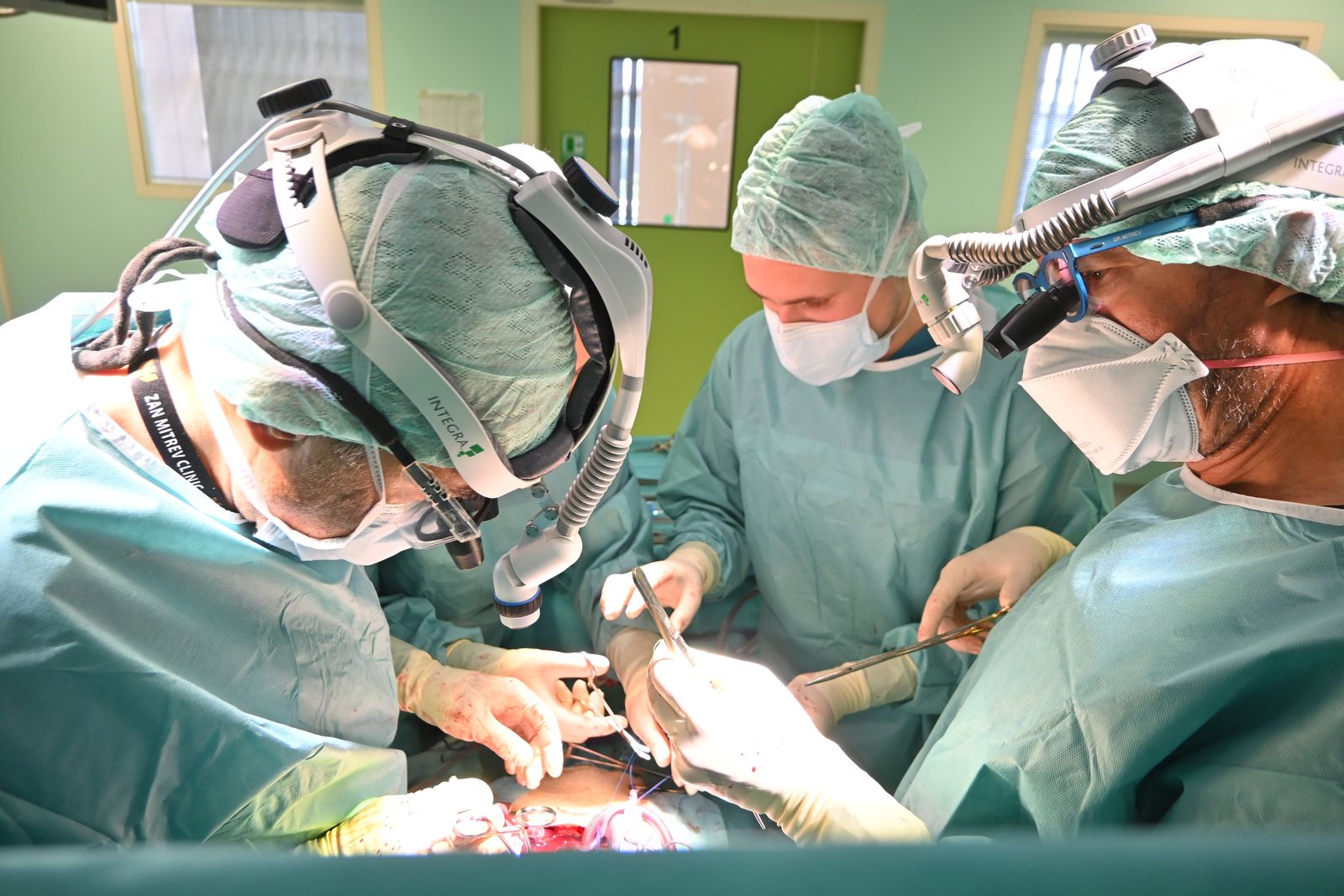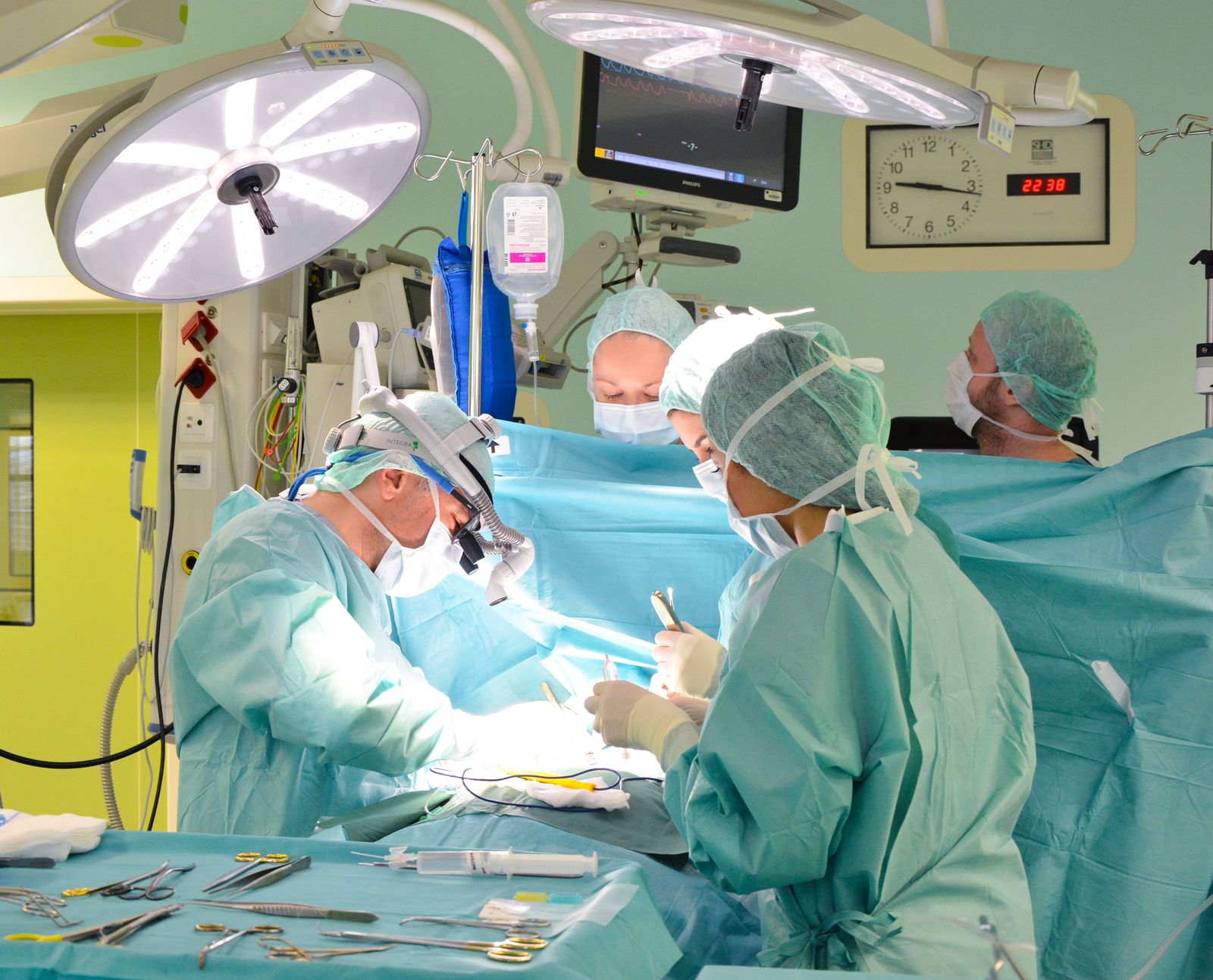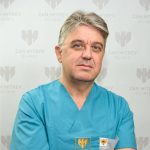 00389 2 3091 484
00389 2 3091 484
МЕДИЦИНСКИ УСЛУГИ
Vascular surgery
Abdominal aorta aneurism
The aorta is the largest blood vessel in the body. It carries the blood from the heart to all the organs. In the abdominal part of the body (the abdomen), the aorta is called the abdominal aorta. Abdominal aorta aneurism (widening) occurs when the blood vessel wall becomes weaker. The widening makes the wall even weaker and creates a possibility for rupture. The abdominal aorta aneurism is more frequent in men as a result of high blood pressure.
Diagnosis of the abdominal aorta aneurism
Most abdominal aorta aneurisms do not cause symptoms and are discovered by chance. A routine examination by a physician using echocardiography, x-ray imaging, or computer imaging or magnetic resonance imaging, made for other purposes may reveal aneurism. In some cases, patients feel pulsations in the abdomen as well as pain during the expansion of the aneurism.
Surgical correction (replacement) of the abdominal aorta aneurism
Surgical replacement/correction of the aneurism is a surgery for replacement of the widened part of the abdominal aorta with artificial prosthesis. The surgery usually lasts for 3-4 hours.

Carotid disease
The carotid arteries are the blood vessels that carry oxygen enriched blood to the head, brain and face. They are situated on both sides of the neck. When plaques and other fatty material block these arteries, the blood flow is reduced or completely blocked, and this is where the problems start. When the blood flow to the brain is blocked, TIA (transitory ischemic attack) may occur. TIA lasts for a few minutes and usually does not cause permanent damage, but it is a warning sign of a fatal stroke.
Around 1/3 of the people with transitory ischemic attack (TIA) get stroke during the following year. The surgical treatment of the carotid disease can prevent the occurrence of a transitory ischemic attack and reduce the risk of stroke.
Carotid disease diagnostics
Diagnosing of the carotid disease starts with the medical history and physical examination
- Doppler ultrasound sonography
- Computer assisted tomography
- Magnetic resonance
Carotid endarterectomy
Carotid endarterectomy is a surgery, surgical technique that removes the plaque (fatty deposits) which narrow the carotid arteries.
- Identification of the blocked part of the carotid artery
- The artery is opened, and the plaque is removed
- The cleaned artery is closed with a stitch.
The surgery usually lasts for 1-2 hours

Vertebral arteries diseases
In Macedonia in general, detection and treatment of vertebral arteries diseases is performed only in Zan Mitrev Clinic. Vertebral arteries diseases cause symptoms ranging from dizziness, instability, ataxia, ringing in the ears, loss of consciousness, diplopia, eyesight problems.
Due to that, very often, patients with this disease are lost in the hospital labyrinths of various medical specialties without detection of the real problem and losing precious time. In Zan Mitrev Clinic, the vertebral artery disease is proven with computer tomography of the head and neck arteries where an experienced team of radiologists performs the analysis (reading of the results), and the team of surgeons assesses the surgical treatment. Transposition is the most common type of surgery of the vertebral arteries.

Peripheral artery disease
Peripheral artery disease is a disease of the blood vessels (arteries) except those of the heart and the brain. The most common stenosis are in the blood vessels carrying blood to the legs, arms, abdomen or kidneys.
Peripheral artery disease symptoms
In the onset, common symptoms of weak circulations in the legs are cramps, weakness, heaviness and pain or discomfort in the legs and thighs during activity. They usually disappear when the activity stops and are called intermittent claudication.
The symptoms of weak circulation in the kidneys include high blood pressure or pressure which is difficult or impossible to manage with medicaments. Severe blockage of the renal arteries may result in loss of the kidney function or kidney failure.
Peripheral artery disease diagnostics
Diagnosing of the peripheral artery disease starts with the medical history and physical examination
- Doppler and duplex ultrasound sonography
- Magnetic resonance
- Computer assisted tomography
- Regular (catheter) angiography
Peripheral bypass surgery
The peripheral bypass surgery is a surgery on the peripheral arteries and veins. It uses blood vessels harvested from another part of the body or artificial prostheses in order to circumvent or bypass the blocked or narrowed part of the artery. The operation lasts for 2-3 hours. The specificness of the surgical procedure depends on the symptoms and the general condition of the patient as well as of the size of the plaques which are deposited in the arteries. Generally, for leg or hand bypass, the surgeon will select a vein which will serve as a bypass graft of the artery. Sometimes, the situation requires using artificial prosthesis as a bypass graft instead of a vein.

Creating arteriovenous fistula in dialysis patients
Vascular shunts
- Portocaval shunt
- Splenorenal shunt
- Mesocaval shunt

Surgery of peripheral veins
Surgery of varicose veins (vein stripping) is a procedure of removal of the veins usually in the legs but also in other parts of the body.
Symptoms of varicose veins that require surgery:
- Constant pain, swelling and heaviness in the leg
- Pain, itching and wounds on the leg skin
- Blood clotting in the veins (thrombophlebitis)
- Bleeding from the varicose veins

TEVAR and EVAR
TEVAR – Thoracic endovascular aortic repair
EVAR – Endovascular treatment of abdominal aortic aneurysms




